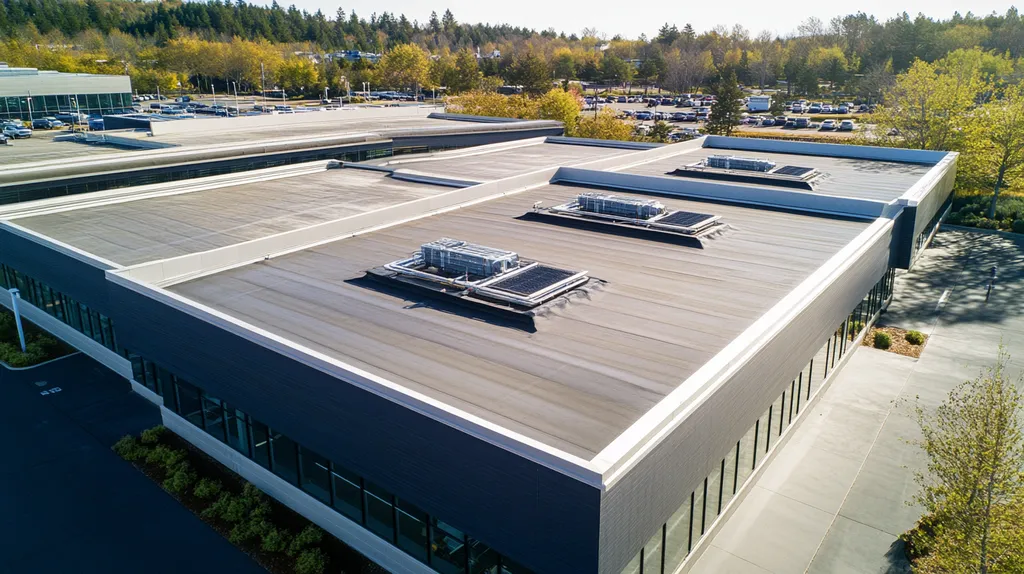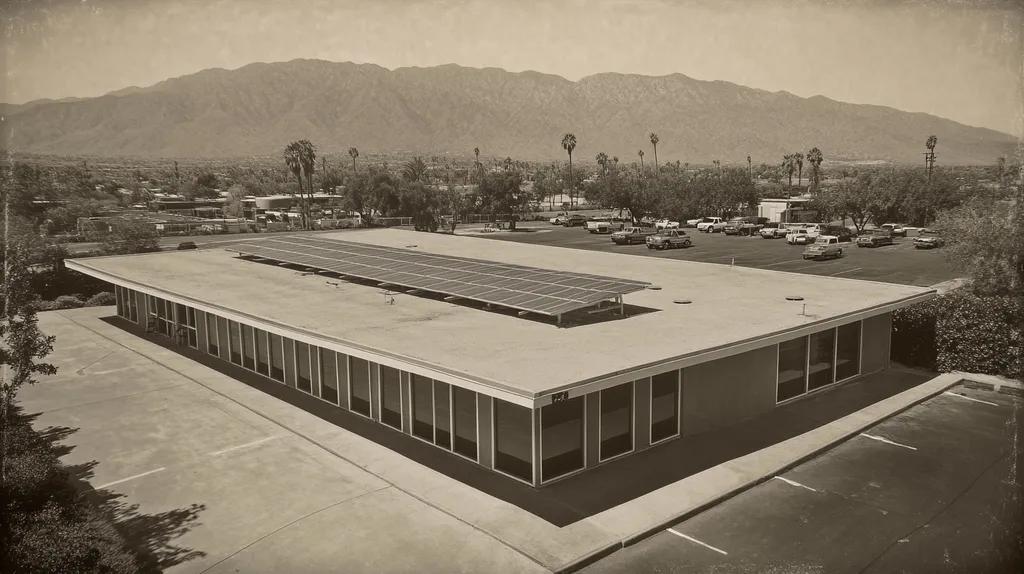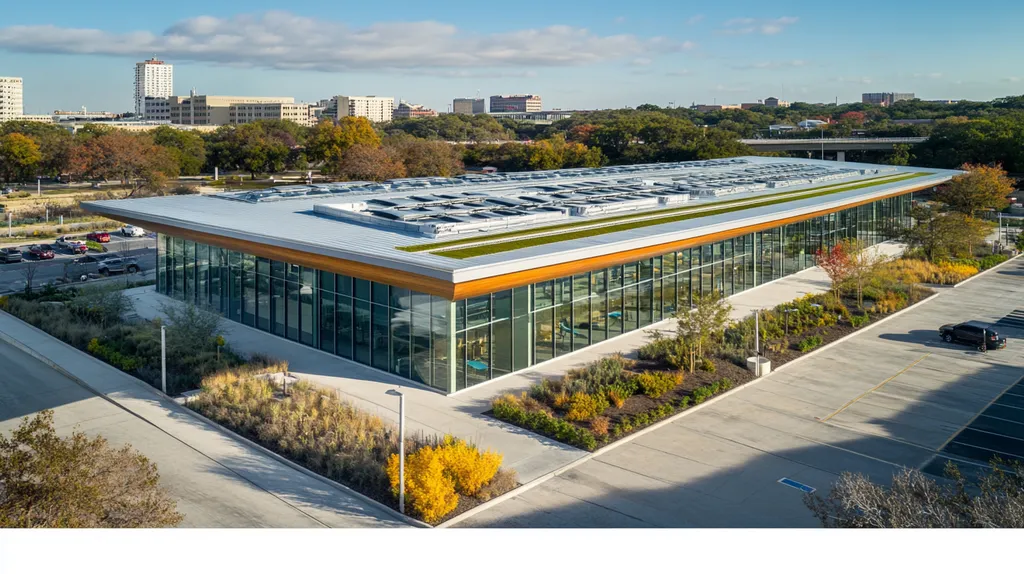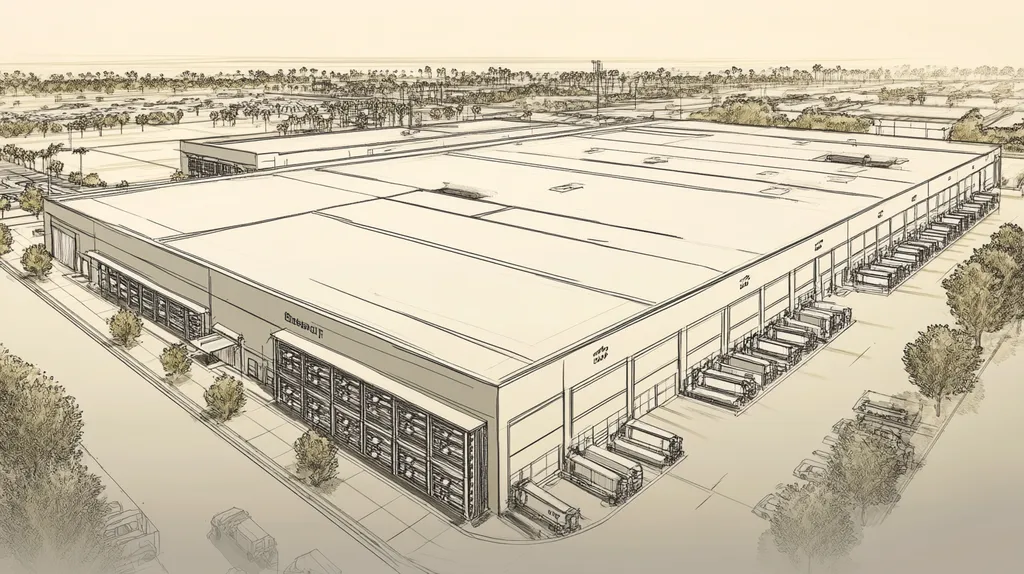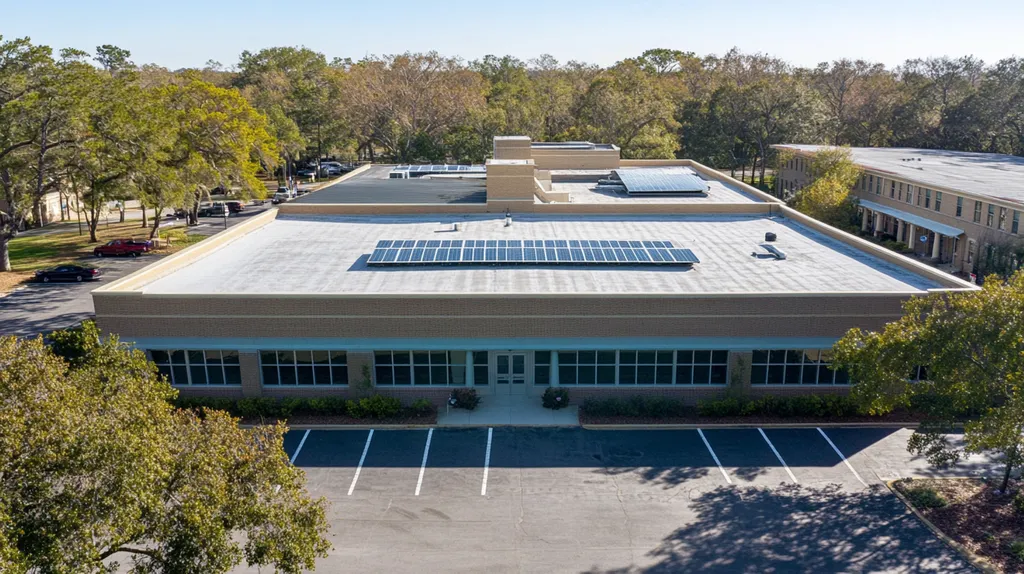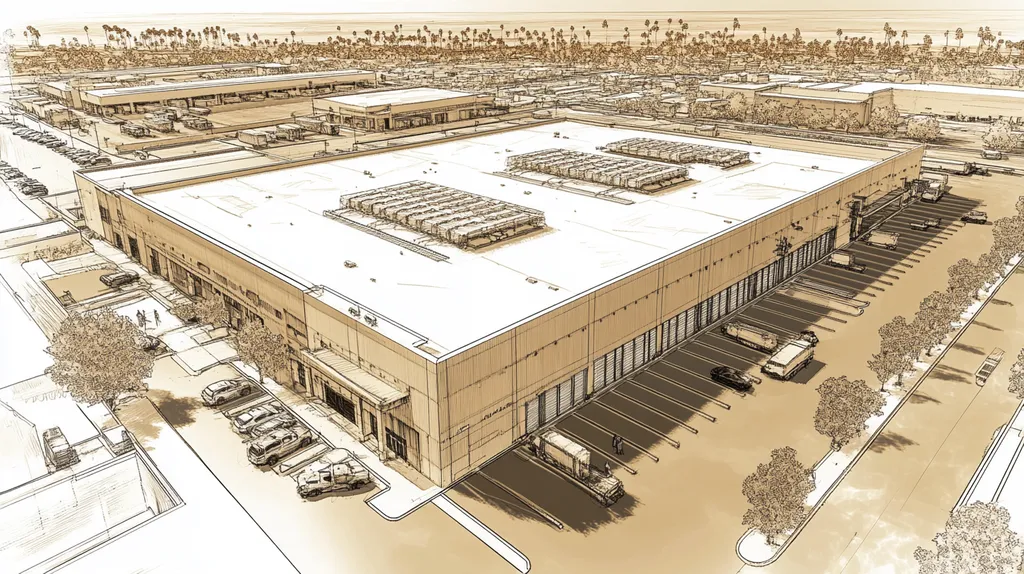In the high-stakes world of industrial roofing, inadequate ventilation silently wreaks havoc on structures nationwide, with studies showing it accounts for up to 30% of premature roof failures and billions in annual repair costs.
For facility managers and property owners, missing the warning signs of poor airflow isn’t just an oversight—it’s an invitation to structural damage, skyrocketing energy bills, and compromised indoor air quality.
This comprehensive guide breaks down the critical indicators of ventilation problems, from subtle temperature variations to visible material deterioration, equipping decision-makers with practical knowledge to protect their investments.
SECTION 1: THE BASICS EXPLAINED
Inadequate ventilation on industrial roofs isn’t just a minor inconvenience; it poses serious risks to both structural integrity and environmental health. It’s alarming to know that a whopping 30% of commercial buildings grapple with ventilation problems that could jeopardize their lifespan. For property owners and facility managers, recognizing the signs of poor airflow is a matter of protecting their assets and maintaining peak operational efficiency. Here, we’ll break down what ventilation is, why it matters to your building, and how it functions in the context of industrial roofing.
What It Is (In Plain Language)
At its core, ventilation is about ensuring fresh air flows through a building while stale air is pushed out. For industrial roofs, effective ventilation is essential for keeping air quality high and temperature regulated. In straightforward terms, good ventilation allows a roof to “breathe,” preventing heat and moisture build-up that threatens the materials beneath.
Without sufficient ventilation, harmful pollutants and excess moisture can fester. This can kickstart a cascade of problems—from mold growth to condensation and eventual structural damage. The goal is straightforward: a healthy indoor environment where the air is clean, and roofing materials stay durable.
To build a solid understanding of ventilation, it’s critical to grasp the interplay between intake and exhaust systems. A properly ventilated roof employs exhaust vents that let hot, moist air escape, while intake vents draw in cooler, fresh air.
Many industrial facilities utilize a mix of mechanical and natural ventilation systems. This combination helps maintain temperature equilibrium and safeguards valuable equipment and materials stored inside.
Why It Matters (To Your Building)
The ramifications of inadequate ventilation for industrial buildings can be severe. Poor airflow creates a breeding ground for moisture accumulation, potentially leading to harmful issues like mold and corrosion. These problems not only threaten the physical structure of the building but also the health of everyone inside, culminating in costly repairs and legal troubles.
Additionally, buildings without proper ventilation frequently face runaway energy bills. When air control systems work overtime to manage stale air, energy costs can spike dramatically. Research indicates that well-ventilated buildings can achieve up to 30% greater energy efficiency.
Good ventilation also cultivates an environment conducive to product quality. For manufacturers, this is paramount; fluctuating temperatures and high humidity can negatively impact products. By addressing airflow needs, businesses can protect their goods and enhance quality control.
Lastly, understanding ventilation isn’t just about comfort—it’s crucial for compliance with safety regulations. Numerous local building codes set specific ventilation standards to safeguard workers’ health, rendering this not just an operational necessity but also a legal obligation.
How It Works
The mechanics of ventilation on an industrial roof involve harmonizing various systems to keep air flowing smoothly. Both the intake of fresh air and the outflow of stale air are essential for achieving a balanced environment. Typically, this process is supported by gravity, mechanical fans, or a blend of both.
Natural ventilation operates on principles of buoyancy and wind: warm air rises, and strategically placed vents can efficiently guide this air outside. Meanwhile, mechanical ventilation employs powered systems for more precise control over airflow, allowing managers to fine-tune indoor conditions effectively.
Another key aspect is regulating temperature and humidity levels. As fresh air enters through intake vents, it mixes with warmer indoor air, creating a stable atmosphere that dissuades unsafe mold and bacteria growth.
Moreover, well-curated ventilation systems take into account the size and purpose of the building. Factors such as roof pitch, occupancy levels, and specific equipment needs all play a role in how effective a ventilation system can be.
SECTION 2: PRACTICAL APPLICATIONS
Inadequate ventilation on industrial roofs can spell disaster, potentially leaving businesses with bills that skyrocket into the thousands for repairs and downtimes. Shockingly, 43% of roofing failures trace their roots back to poor airflow, undermining everything from structural strength to energy savings. Catching the early signs of inadequate ventilation is crucial to preventing these budget-busting issues. This section dives into the various practical uses of ventilation systems, the vital moments when evaluation is essential, and how these systems work alongside other roof components.
Common Uses & Examples
Ventilation systems are a necessity in a variety of industrial settings, ensuring a balanced airflow throughout a building. These systems are staples in manufacturing plants, warehouses, and storage facilities. For example, in a factory churning out perishable goods, effective ventilation is essential to keep humidity levels at bay, preventing spoilage.
Temperature control is another critical aspect of airflow. In a facility housing sensitive electronics, high temperatures can spell disaster. Without proper ventilation, the risk of expensive equipment failures rises sharply, leading to lost productivity and wasted resources.
When it comes to roofing, enhancing air circulation is key to reducing moisture accumulation, which can compromise structural integrity over time. Systems like roof vents, exhaust fans, and ridge caps work together to maintain the necessary airflow, each playing a vital role in the overall health of the roofing system.
Ignoring tailored ventilation needs specific to an industry can lead not only to reduced operational efficiency but also to costly repairs and replacements. Think of ventilation as the unsung hero of the industrial roof—without it, disaster lurks just around the corner.
When You Need It Most
Knowing when to act on ventilation concerns is paramount for the long-term health of any roof. Seasonal changes, particularly the shift from summer to fall, are critical moments for inspection. During these times, roofs undergo thermal expansion and contraction, making adequate airflow more essential than ever to avoid stress-induced damage.
High humidity environments, especially in coastal areas, significantly increase the risk of moisture accumulation, making ventilation absolutely crucial. Regular inspections should ideally occur twice a year, focusing on changes in airflow patterns and clearing any obstructions in the ventilation systems.
After severe storms or significant weather changes, be on high alert for signs of drifting indoor climate. Sudden shifts could indicate ventilation issues—property owners need to carry out thorough assessments to detect moisture buildup and confirm that all ventilation systems are functioning properly.
By being proactive during these pivotal periods, businesses can sidestep catastrophic failures that lead to financial headaches down the line.
Interactions With Other Systems
Ventilation doesn’t operate in a vacuum; it interacts closely with other building systems. For example, HVAC units depend on effective ventilation to regulate both temperature and air quality. When ventilation falters, it just adds to the burdens of HVAC systems, driving up energy costs and increasing the likelihood of breakdowns.
Furthermore, electrical systems are not immune. Poor airflow can lead to overheating issues, jeopardizing the performance of sensitive equipment and increasing the potential for expensive downtime.
Moreover, roofing materials themselves rely on proper airflow. A well-ventilated roof minimizes moisture retention, reducing the risk of damaging roofing elements like shingles or membranes. This interconnectedness underscores the need for a comprehensive approach to roof maintenance that considers how ventilation fits into the larger picture.
Understanding how ventilation interfaces with other operational systems enables facility managers to make informed choices that optimize performance and extend the lifespan of their roofs.
SECTION 3: KEY TERMINOLOGY DECODED
Understanding the terminology surrounding ventilation is crucial for maintaining industrial roofs. Inadequate airflow can lead to catastrophic consequences like structural damage and crippling energy inefficiency. Property owners and facility managers need to arm themselves with essential terms to effectively navigate and tackle ventilation problems. This section will decode vital vocabulary, translate industry jargon, and demystify measurement units related to roofing ventilation.
Essential Terms Explained
Airtightness is how effectively a building seals off airflow. For industrial roofing, airtightness is your first line of defense against humidity and heat build-up. If your roof isn’t airtight, you’re practically inviting moisture that can rot the materials from the inside out.
Then there’s thermal bridging—a sneaky villain in the world of roofing. It happens when a material conducts heat much better than its neighbors, leading to heat loss. If your roof lacks proper ventilation, thermal bridging can turn into a double whammy of high energy costs and deteriorating materials.
Ventilation rates measure the volume of air exchanged in a given space over time. For optimum roof performance, these rates should align with established industry standards, which can differ based on building type and function.
Lastly, stagnant air is your roof’s worst enemy—it refers to air that refuses to move, trapping heat and humidity. This stagnant environment can lead to mold growth, a serious concern for both roof integrity and health within the building.
Industry Jargon Translated
Let’s unpack “negative pressure.” This term describes a situation where air pressure inside a building drops below the pressure outside, which can draw moisture into the roofing structure. Moisture intrusion is a fast track to headaches for property owners.
Next, we have “passive ventilation,” which relies on natural airflow without any mechanical help. Buildings with poor passive ventilation can quickly become a stew of hot, stale air and diminished air quality—a recipe for disaster.
On the flip side, “dynamic ventilation” employs fans or blowers to keep the air moving. While effective, leaning too hard on mechanical systems can skyrocket operational costs if there’s no balance with natural airflow.
Lastly, the term “air exchange ratio” tells us how often the air in a space is replaced. Grasping this concept helps assess whether the current ventilation strategy is doing its job or if it’s time for a rethink.
Measurement & Units Simplified
Measurement is crucial when it comes to assessing roof ventilation. Cubic feet per minute (CFM) is the go-to unit for measuring airflow—it quantifies how much air passes through a space in a minute. Knowing the required CFM ensures your building maintains sufficient ventilation, which is key to preventing humidity and heat buildup.
Another essential measurement is the square footage of ventilation openings. This figure shows the total area for air to enter or exit. Accurate calculation of this area is vital for achieving optimal air exchange rates.
Degrees Fahrenheit (°F) comes into play for tracking temperature differences, a telltale sign of ventilation troubles. If the temperature differential is significant, it could indicate that heat isn’t escaping as it should.
By mastering these measurements, property owners and facility managers are empowered to make smarter decisions about ventilation strategies and roofing maintenance, ensuring the safety and efficiency of their industrial roofs.
SECTION 4: DECISION FACTORS
When it comes to inadequate ventilation on industrial roofs, the clock is ticking. Poor airflow can create a perfect storm for problems like trapped moisture, mold growth, and roof failure. With the National Roofing Contractors Association noting that roof failures can cost property owners a staggering amount, understanding the decision factors for improving ventilation is not just wise—it’s essential. It’s about making smart choices that guard against losses and extend your roof’s lifespan.
Cost Considerations
Cost is the pivotal factor when considering ventilation solutions. Sure, investing in advanced ventilation systems may feel like a leap, but it often results in tailwinds of savings over time. A well-ventilated roof can slash HVAC usage and energy bills by up to 30%. That’s not pocket change.
Moreover, the cost of preventive maintenance can be a fraction of the repair bill that comes from ignoring ventilation issues. Investing in ventilation upgrades can eliminate the hidden expenses associated with mold remediation and structural repairs down the line. You have to ask yourself: is it really a splurge if it saves you from future financial headaches?
Budgetary constraints shouldn’t shadow the economic benefits of proper ventilation. View these improvements as an investment in the longevity and overall health of your building. By assessing the full lifecycle costs, property owners can grasp the real value of adequate ventilation and make more informed decisions.
Performance Trade-offs
Deciding on ventilation often feels like walking a tightrope between performance and capabilities. Yes, a robust ventilation system can enhance air quality and keep temperatures steady, boosting both worker productivity and comfort. However, there’s often hesitation to tweak existing systems due to the perceived hassle.
The right ventilation solution can excel in thermal performance and minimize heat build-up. Installing roof fans or ridge vents can efficiently circulate air while maintaining optimal moisture control. Ignoring ventilation could risk compromising the whole roofing system’s performance—an unwise gamble in the long term.
Navigating these performance trade-offs is crucial to ensuring that long-term functionality is not sacrificed for short-term savings. By assessing how ventilation enhances overall roof efficiency, facility managers can make choices that pay dividends down the line.
Lifespan & Durability Factors
A poorly ventilated industrial roof doesn’t just falter; it significantly shortens its lifespan and reduces durability. Inadequate airflow can lead to moisture buildup, causing materials to deteriorate much faster than they should. Research suggests that effective ventilation can bolster a roof’s life expectancy by an impressive 10 to 15 years.
Additionally, roofs equipped with proper ventilation are better suited to handle thermal expansion and contraction, preventing cracking and seam failures. This aspect of durability not only extends the life of the roof but also minimizes the need for costly repairs.
Understanding the connection between ventilation and longevity reinforces why proactive measures are indispensable. Implementing well-designed vent systems ensures unobstructed airflow, which is key to preserving roofing material integrity. A smart ventilation strategy not only enhances durability but also protects investments and lowers future financial risks.
SECTION 5: COMMON CHALLENGES
Inadequate ventilation on industrial roofs isn’t just an inconvenience; it can lead to serious structural issues and eye-watering repair costs. Studies reveal that poor airflow can hike energy expenses by as much as 30%. For property owners and facility managers, spotting these ventilation challenges is crucial for maintaining a safe and efficient environment. This section dives into common problems, warning signs to keep an eye on, and proactive approaches to ensure roofs remain in peak condition.
Frequent Problems & Solutions
One of the most common culprits of inadequate ventilation is condensation buildup. This moisture can wreak havoc on insulation and roofing materials. Over time, it can lead to mold growth, creating health risks and expensive remediation headaches. Property owners should routinely inspect for moisture issues and take prompt action.
Another frequent headache is excessive heat trapped inside the building. This situation can lead to uncomfortable working conditions and increased energy demands on cooling systems. Simple fixes like adding vents or exhaust fans can greatly improve air circulation, boosting comfort for staff while also cutting down energy costs.
Getting the sizing of ventilation systems right is absolutely critical; oversized or undersized units can cause a whole new set of problems. Facilities managers must collaborate with experienced roofing contractors to evaluate their current systems and implement fixes quickly. This proactive strategy helps protect roofs and extend their lifespan.
Lastly, neglecting routine maintenance can exacerbate existing ventilation problems. Implementing a regular inspection and cleaning schedule can significantly prolong a roof’s lifespan and keep ventilation systems running effectively. A little preventive care goes a long way in sustaining roof health and functionality.
Warning Signs To Watch For
Several visible indicators can alert property managers to inadequate ventilation on their industrial roofs. For instance, moisture accumulation on the underside can signal poor airflow. Water stains, blistering, or peeling paint are not just cosmetic issues; they can point to serious moisture problems lurking beneath the surface.
Unusual temperature variations across different areas of the building may also indicate ventilation issues. If certain sections feel hotter or colder than others, airflow is likely stifled. Regular temperature readings can help quickly pinpoint these discrepancies.
Musty odors are another red flag, often indicative of moisture buildup. Property managers should not brush these off as minor irritations; they can seriously compromise indoor air quality and occupant health. Prompt investigation and remediation are a must when these smells arise.
Finally, ice damming during winter months is a telltale sign of poor airflow and heat accumulation. This situation can lead to significant damage to the roof membrane if left unattended. Regular monitoring and timely interventions will be essential in preventing such issues.
Preventative Approaches
Taking a proactive approach to ventilation is like putting money in the bank—it saves costs and enhances roof longevity. Regular assessments of ventilation systems are vital; contractors should be called in for thorough inspections at least once a year to sniff out potential problems before they escalate.
Implementing an effective air exchange system can drastically improve airflow. Options include installing ridge vents, soffit vents, or turbine vents to promote air movement. Thoughtful planning during facility construction or renovation can incorporate these systems from the get-go.
Educating staff on the importance of proper ventilation can also make a significant difference. Engaging employees to recognize problems early can lead to preemptive measures, saving everyone from costly repairs. An informed team contributes to a healthier working environment.
Lastly, developing a comprehensive action plan for maintenance and upgrades can help ensure ongoing roof health. Scheduled maintenance checks and timely updates to outdated systems can sidestep future complications. Taking these proactive measures prepares facilities to tackle ventilation challenges head-on.
SECTION 6: NEXT STEPS & RESOURCES
Failing to address inadequate ventilation on an industrial roof is like ignoring a slow leak—eventually, it will flood your finances and jeopardize safety. The stakes are high; property owners and facility managers need to take actionable steps to ensure optimal airflow and prevent financial waste. This section highlights critical questions to pose to service providers, essential industry standards to be aware of, and resources that can enhance understanding of ventilation management.
Questions To Ask Providers
When scouting for a roofing provider, asking the right questions is essential for assessing their ventilation expertise. Start by inquiring about their experience in diagnosing airflow issues, and how they plan to probe existing ventilation systems for weak spots.
Then, dig deeper into the solutions they propose for improving ventilation. What technologies do they plan to implement? Will they recommend turbine ventilators or ridge vents? Understanding these solutions can clarify how aligned the provider’s approach is with best practices in the industry.
It’s also wise to ask for examples of similar projects they’ve successfully completed. A reputable provider should be able to showcase measurable improvements in both indoor air quality and roof performance.
Finally, confirm what warranties or maintenance plans come along with their services. A solid warranty combined with ongoing maintenance commitments can significantly impact long-term roof health and performance.
Industry Standards & Guidelines
Grasping industry standards is critical for effective roof ventilation management. Organizations like the American Society of Heating, Refrigerating, and Air-Conditioning Engineers (ASHRAE) provide valuable guidelines for air exchanges and airflow rates. Familiarizing yourself with these recommendations can provide a roadmap for compliance and performance.
Additionally, the Occupational Safety and Health Administration (OSHA) outlines requirements for workplace ventilation, ensuring the safety of employees. Keeping these standards in mind helps facility managers uphold legal obligations while fostering a healthier working environment.
It’s also useful to examine the guidelines from the National Roofing Contractors Association (NRCA). Their resources offer insights into developing an overarching roof maintenance plan that includes focused ventilation strategies.
Staying attuned to these standards can help prevent costly ventilation-related issues, letting your industrial roof thrive rather than just survive.
Further Learning Simplified
Expanding knowledge about adequate roof ventilation is easier than it seems, with a variety of accessible resources available. Online webinars and workshops held by roofing associations can provide expert insights directly from industry leaders. These formats allow for quick and effective knowledge acquisition.
Trade publications frequently feature articles on the latest ventilation best practices and technologies. Subscribing to these publications can ensure property owners stay informed about current trends, challenges, and advancements.
Local seminars or networking events present excellent opportunities for face-to-face discussions about ventilation best practices. Engaging with other professionals in the field allows for the sharing of experiences and strategies that can enhance roof health.
By leveraging these educational resources, facility managers can make well-informed decisions, ensuring their roofs perform optimally while maintaining healthy indoor air quality.
The Bottom Line
With inadequate ventilation causing up to 30% of industrial roof failures and billions in annual repair costs, facility managers can’t afford to ignore the warning signs.
From condensation build-up to skyrocketing energy bills, poor airflow creates a cascade of costly problems that threaten both structural integrity and operational efficiency.
The solution lies in proactive monitoring, regular maintenance checks, and swift intervention when issues arise.
By understanding key ventilation metrics, implementing proper airflow solutions, and partnering with qualified providers, property owners can extend roof lifespan by 10-15 years while reducing energy costs by up to 30%.
The choice is clear: invest in proper ventilation now, or pay significantly more for repairs and replacements later.
FREQUENTLY ASKED QUESTIONS
Q. What are the signs of inadequate ventilation on a commercial roof?
A. Look out for moisture accumulation, mold growth, or temperature fluctuations. These are key indicators that your airflow is stifled, leading to potential structural damage. Regular inspections can help catch these problems early, saving you from a wallet-emptying disaster.
Q. How does inadequate ventilation affect industrial roof health?
A. Poor ventilation leads to moisture buildup and increased energy bills, resulting in roof deterioration. Over time, this can weaken the structural integrity and accelerate the need for costly repairs. A little airflow goes a long way in keeping your roof and finances healthy.
Q. What terminologies should I know about my industrial roof’s ventilation?
A. Key terms include airtightness, thermal bridging, and stagnant air. Understanding these helps you recognize potential ventilation problems and their implications for your roof. Familiarity with basic vocabulary boosts your ability to communicate effectively with roofing professionals.
Q. What are common challenges in maintaining ventilation on commercial roofs?
A. Common issues include condensation buildup, excessive heat, and improperly sized ventilation systems. These challenges can compromise your roof’s health. Regular maintenance checks help nip these problems in the bud and keep your roof in working order.
Q. When should I perform ventilation inspections on my industrial roof?
A. Inspections should occur at least twice a year, especially during seasonal changes. These are critical moments when roofs experience thermal expansion. Regular checks help identify issues before they escalate, ensuring longevity for your roof investment.
Q. What questions should I ask roofing providers about ventilation?
A. Ask about their experience diagnosing ventilation issues and the solutions they recommend. Understanding their approach and technologies ensures you’re not left in the dark about your roof’s needs. Don’t forget to inquire about warranties and maintenance plans!
Q. How can I educate my team on ventilation needs for a commercial roof?
A. Conduct regular training sessions and share resources about the importance of ventilation. Encourage staff to report any signs of inadequate airflow immediately. A knowledgeable team can help keep an eye out for issues, maintaining an optimal working environment.

